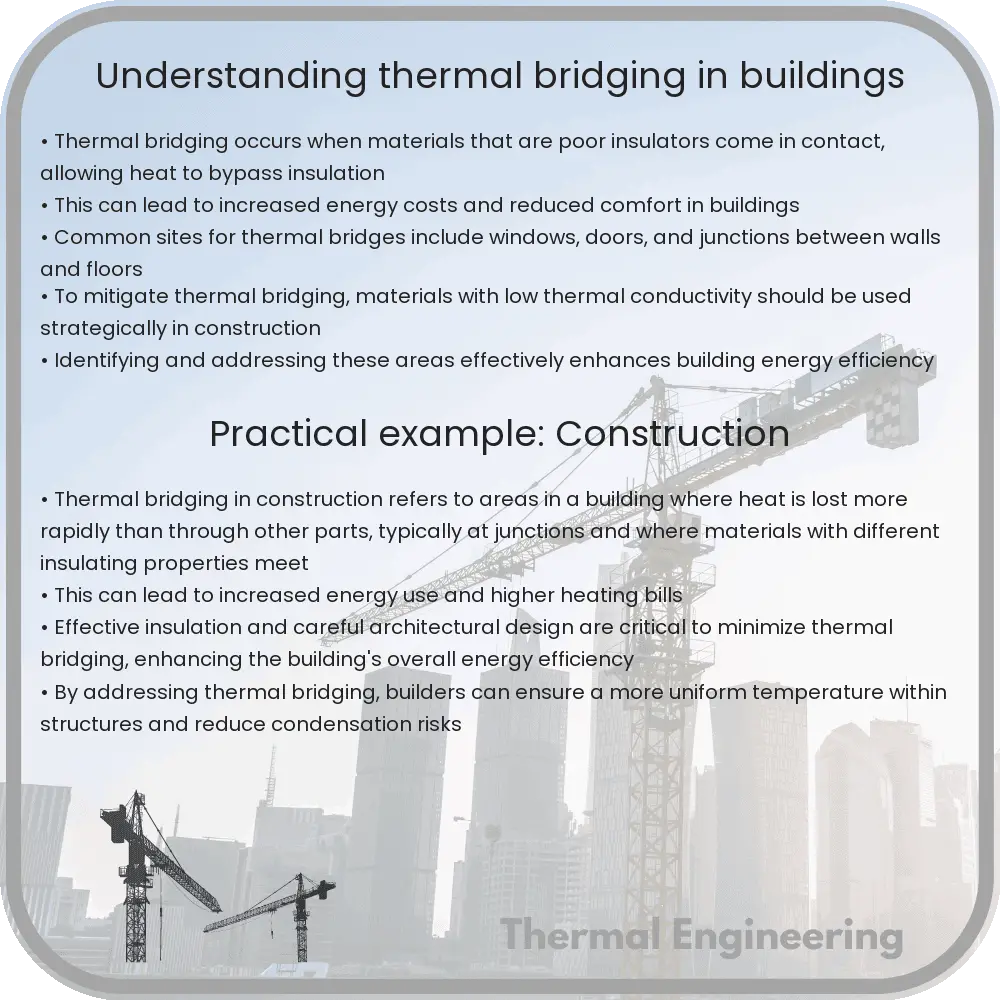Learn about thermal bridging in buildings, its impact on energy efficiency, and strategies to mitigate heat transfer through design and construction.

Understanding Thermal Bridging in Buildings
Thermal bridging is a critical concept in building science that refers to the transfer of heat across an object that is more conductive than the materials around it. In buildings, these thermal bridges can significantly impact energy efficiency and thermal comfort. This article will explore what thermal bridging is, how it occurs, and strategies to mitigate its effects in construction and building design.
What is Thermal Bridging?
A thermal bridge, also known as a cold bridge or heat bridge, occurs when there is a direct connection between the interior and exterior of a building through one or more elements that are more heat conductive than the rest of the building’s envelope. This can result in unwanted heat transfer, leading to energy loss and potential issues with condensation and mold growth.
Common Sources of Thermal Bridging
- Structural elements: Metal fasteners, steel beams, concrete floor slabs, and window frames can all act as thermal bridges because these materials typically have higher thermal conductivity than surrounding insulative materials.
- Design and construction flaws: Gaps in insulation, incomplete insulation, and alignment issues during construction can create pathways for heat to bypass the insulation.
- Geometric effects: Corners, edges, and junctions where the area of heat flow is concentrated can amplify the effects of thermal bridging.
Impact of Thermal Bridging
Thermal bridging can lead to several problematic outcomes in buildings, including:
- Increased energy consumption: Heat loss or gain through thermal bridges can lead to higher operational costs due to increased heating and cooling demands.
- Comfort issues: Uneven temperatures and cold spots can affect occupant comfort and satisfaction.
- Condensation and mold growth: When warm, moist indoor air comes into contact with a cold surface, condensation can occur, promoting mold growth and deteriorating indoor air quality.
How to Mitigate Thermal Bridging
Addressing thermal bridging requires careful consideration during both the design and construction phases of a building. Here are some strategies to minimize thermal bridges:
- Using thermal breaks: Installing materials with low thermal conductivity between conductive elements and the building envelope (such as insulating gaskets) can reduce heat flow.
- Enhanced insulation: Continuously insulating across all components of the building envelope minimizes the paths for heat transfer via conduction.
- Thermal modeling: Advanced modeling tools can predict where thermal bridges might occur and help architects and engineers design to minimize them.
- Attention to detail in construction: Ensuring alignment and continuity of insulation, and verifying that all materials meet specified thermal resistance values, are crucial.
Conclusion
Thermal bridging is a significant factor affecting a building’s thermal efficiency and comfort levels. By understanding how and where thermal bridges occur, builders and designers can implement strategies to mitigate their impact, leading to more energy-efficient, comfortable, and healthier environments. Addressing thermal bridging not only helps in reducing operational costs but also contribute towards sustainable building practices.